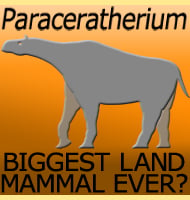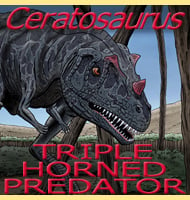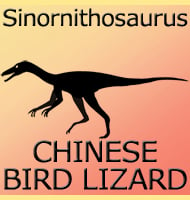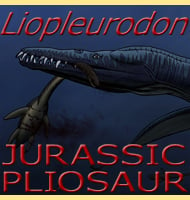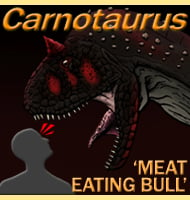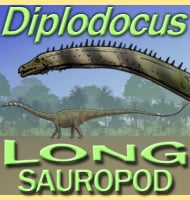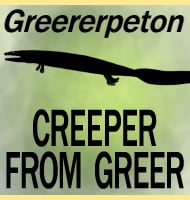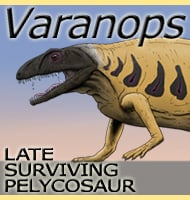When the first carnivorous dinosaur remains were discovered they were found as isolated individuals, occasionally in close proximity to herbivorous dinosaurs that may have been their prey. This gave rise to the notion that the dinosaurs were solitary hunters in a similar fashion to some of the predators today such as tigers and bears. However new fossil discoveries around the world combined with modern study of these ancient predators has steadily eroded the acceptance of this notion.
Slowly, more fossil sites are being discovered which show the presence of more than one predator in that location. In 1931 Barnum Brown was recovering the remains of the dinosaur Tenontosaurus when another fossil specimen of a carnivorous dinosaur which would later be named Deinonychus was also discovered. But here it wasn’t the discovery of a new predatory dinosaur that was important but the fact that a total of five individuals of the same species were discovered around the same Tenontosaurus skeleton.
It was not until the late 1960s that the potential importance of this site was realised when the fossil material was studied by a team led by John Ostrom. Furthermore, the site would prove not to be unique, with other Tenontosaurus and Deinonychus remains (usually the teeth of Deinonychus) being discovered together. It is certain that Deinonychus fed upon Tenontosaurus but the questions that beg asking are did Deinonychus make the kill? and if so how could such a small predator kill such a large herbivore?
The quick answer is that as an individual hunter Deinonychus couldn’t. But as a pack? Immediately the tantalising possibility that some dinosaurs were pack hunters was too much to resist, and the notion quickly spread throughout the world. However this idea was not and still is not universally accepted by all. One answer is that Deinonychus was not involved in the killing but merely scavenged the kill of another predator. This has also given rise to the comparison of a feeding hierarchy, as seen in modern day Komodo Dragons (Varanus komodoensis).
Komodo Dragons do not form groups and remain solitary creatures throughout their lives. As well as being powerful hunters they are also known to search out and eat carrion, something that they may be able to smell from over five miles away. This means that several Komodo dragons can and often do approach the same carcass, and in this situation a hierarchy of the largest and strongest eat first while the smaller ones wait for them to eat their fill and leave the carcass. However, if another Komodo Dragon challenges the other then a fight ensues for dominance of the meal. Although not always fatal, the loser can be so badly injured that it is killed and actually ends up getting eaten by other Komodo Dragons.
In this analogy, The Deinonychus remains discovered with the Tenontosaurus represent the killed losers that challenged for a right to feed at the remains. The problem with this kind of comparison is that you are applying animal behaviour that has been studied as it happened, in a species that is well known to us, to an animal that died out 108 million years ago and is only known to us from bones. While a good theory and a plausible one, it is not an absolute answer that can be applied to either Deinonychus or other predatory dinosaurs as a whole.
Another possible answer is that of a predator trap. There are many kinds of predator trap but they essentially work upon the same principal; An animal dies or becomes trapped in a hazardous area such as a tar pit. Predators then come to feed upon it but end up getting trapped themselves. A third answer is that they were all killed by some event such as a flood or landslide, resulting in their fossilisation together.
The larger Theropods
Deinonychus is not the only carnivorous dinosaur that has several of the same species preserved together, in fact it is just one of a growing number of carnivorous dinosaurs that have been preserved in what appear to be groups. A mixed bone bed consisting of five hadrosaurs and three Daspletosaurus individuals of different ages were found together at the Two Medicine Formation in the US state of Montana. As evidence that Daspletosaurus hunted together, it is not great, in fact it’s a weaker argument for the support of dinosaur pack hunting than that provided by the multiple Deinonychus remains. This is mainly because the remains of herbivorous dinosaurs outnumber the remains of the predators making it unlikely that they were killed by the Daspletosaurs.
Geological study of the site indicates that the dinosaurs were not washed there by a river system, and teeth marks on the hadrosaur remains akin to those made by Daspletosaurus teeth proves that the hadrosaurs died first. Further, the hadrosaur bones are well scattered indicating that their bodies had been thoroughly pulled apart. It is unknown for certain how the hadrosaurs died but they did die together, and if they did not drown, they may have been killed by something else they could not have run from.
The late Cretaceous was a time of high geological activity with the continental plates breaking up and sliding into one another. While everyone knows about volcanoes blowing their tops and spewing lava all over the place, many fail to realise that this is but a final outcome of the geological stresses that take place deep underground. Just as dangerous, if not more so than the eruption itself is the release of toxic gasses such as carbon dioxide among others.
The five hadrosaurs may have been in a geologically active area when they were caught in a sudden release of carbon dioxide. This could have deprived the hadrosaurs of oxygen for anything from a few minutes to even hours causing them to suffocate. Afterwards, once the carbon dioxide had cleared and the air content returned to normal, roaming Daspletosaurus may have found the carcasses and began eating them only to find themselves caught in a second discharge of carbon dioxide.
A possible second explanation that relies upon the conjecture that they were indeed hunting together is that the Daspletosaurs had killed the five hadrosaurs in similar manner to a modern day fox that will kill all of the chickens in a coop even though it can’t possibly eat all of them. This is done so that the fox knows where to find an easy next meal, and is why foxes usually return to areas where they have killed but not eaten all of the birds, it simply prevents their prey from moving on.
In all, the remains of the Daspletosaurs in this instance do not greatly support the theory for pack hunting in dinosaurs. But there is another bit of interesting evidence to be found in Daspletosaurus, and other tyrannosuarids such as a Gorgosaurus and Tyrannosaurus itself, and these are bite marks that sometimes appear on the faces. Intraspecific (as in members of the same species) biting of the face is often seen in other animals, especially when carnivores are establishing dominance over one another. The teeth marks found in some of these skulls have been well enough preserved to indicate that they have healed after they were inflicted indicating that they were not necessarily meant to be fatal.
Predator only bone beds
The re-discovery of a bone bed in 1997 would lead to much better evidence suggesting that the larger theropods could form packs. Originally discovered in 1910 by Barnum Brown, the site was not too well documented save for a mention of several tyrannosaur remains found together. After its mention in ‘The National Geographic Magazine’, the site along with its location faded from memory. It would not be until Dr Philip Currie, who was looking for evidence to support the idea of pack behaviour in carnivorous dinosaurs that the site was remembered. The problem was that the best that Dr Currie and his team could hope for was that the bone bed was somewhere along the Red Deer river in Alberta, Canada. Luckily, a few photographs remained of the site and after painstakingly searching the area, the tyrannosaur remains were discovered.
Now quite commonly known as the Dry Island Bone bed, the exact dinosaur species was Albertosaurus, a tyrannosaurid of the late Cretaceous. Most importantly it was the only species to be recovered from this bone bed with up to twenty-two individuals of all ages being discovered together. This was the first (albeit for the second time) major discovery to represent possible pack behaviour in dinosaurs.
Critics of the site have cited the concentration as evidence of a predator trap, or the ‘Komodo Dragon’ theory. Another idea is that environmental factors forced the predators together, such as gathering around a watering hole during a drought. Regardless of the interpretation of the fossil material, it still remains good evidence to support the predator pack theory, with multiple individuals, all different ages, only one species, just like you get with pack hunting predators today.
Albertosaurus would prove to be not the only predatory dinosaur to contribute to the pack theory. Down in Argentina, soon after the rediscovery of the Dry Island bone bed, a second bed was discovered. Excavated by Dr Rodolfo Coria and Dr Philip Currie, they not only identified a new carnivore, Mapusaurus, they found remains that belonged to up to seven individuals in the same spot. Again, there was only one type of dinosaur, and all the individuals in the group were all different ages when they died.
Footprints and Track ways
Those who hold firm to the belief that dinosaurs did not hunt in packs often point to the existence of fossilised track ways. These track ways exist all over the world, sometimes left by individuals, there are also good imprints that show entire herds of herbivorous dinosaurs not only walking together but changing direction together as well, proving the herbivorous dinosaurs at least did live in groups. But tracks left by predatory dinosaurs have always been known to be solitary.
However, new discoveries are even casting doubt onto this method of interpreting dinosaur behaviour. In 2007 a track way was discovered in China that shows what appear to be several dinosaurs similar to Deinonychus moving together as a group. Although not evidence of pack hunting, it could prove precious evidence that it was not only the herbivores that moved in groups.
Definition of pack hunting
Going on the assumption that at least some of the predatory dinosaurs did hunt in packs, it would then bring the question, to what extent? One possibility is that there were no defined groups as such, more a collection of predators that stalked the fringes of a herd. Driven by hunger some might have charged at a herd of dinosaurs trying to break an individual off from the rest. As the prey dealt with one predator, a second predator might have moved in from the side to deliver a fatal or crippling wound. This could be called a form of accidental cooperation as the predator that delivered the decisive blow did so out of opportunity rather than planning. How the kill is then divided amongst others could be a case of largest and strongest first, much like the aforementioned Komodo Dragons.
Going further than this would bring in the concept of advanced pack behaviour including cooperative hunting and social structure within the pack. This could mean a dominant individual or pair within the group with the other members being subordinate to them. It could also mean hunting strategy, perhaps with the younger pack members breaking up a herd and driving an individual towards an older and larger pack member that was better equipped to make a kill.
This behaviour is seen today in packs of wolves or prides of lions, and while they are mammals not reptiles like the dinosaurs were, mammals are the current dominant life forms on this planet, that fill the same roles that would have once been taken by dinosaurs. While it is easy to draw an analogy between the dinosaurs and modern lizards on the basis that they are both reptiles, lizards today do not have to take down big game like the reptiles of the Mesozoic. It is worth remembering that assuming the dinosaurs were just like lizards led to grossly incorrect physical reconstructions that were not even close to how they really were. Assuming they were like modern lizards, when many of the dinosaurs filled ecological niches that modern lizards do not, can be equally misleading when reconstructing the past.

